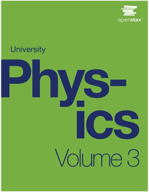?The HCl molecule oscillates at a frequency of 87.0 THz. What is the difference (in eV)
Chapter 6, Problem 128(choose chapter or problem)
The HCl molecule oscillates at a frequency of 87.0 THz. What is the difference (in eV) between its adjacent energy levels?
Unfortunately, we don't have that question answered yet. But you can get it answered in just 5 hours by Logging in or Becoming a subscriber.
Becoming a subscriber
Or look for another answer
